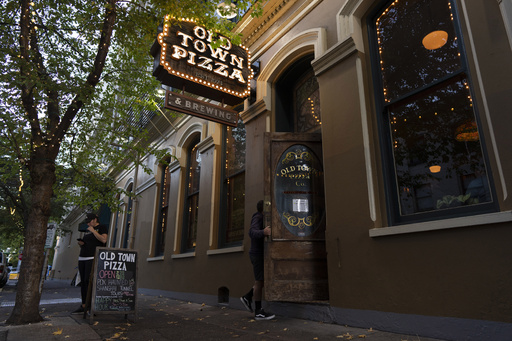
FALL RIVER, Mass. — The infamous nursery rhyme surrounding Lizzie Borden says, “Lizzie Borden took an axe, and gave her mother 40 whacks. When she saw what she had done, she gave her father 41.” Although the rhyme may not be factually correct, it captures the enduring intrigue of the horrific double murder that transpired in the Borden residence in 1892. This fascination has led many visitors to seek experiences at what is now referred to as the Lizzie Borden House, where some even choose to spend the night.
As October rolls in, marking the onset of Halloween festivities, many tourists consider it a perfect time to explore sites with macabre histories or venture into dimly lit basements holding lanterns. Despite the absence of scientific proof for hauntings or the existence of ghosts, surveys suggest that a significant portion of Americans—more than one-third—believe in such occurrences. For many, these tours offer a thrilling adventure rather than a serious encounter with the supernatural.
Entrepreneurs are keenly aware of how to monetize the allure of death and mystery that has captivated humanity since time immemorial. Tour guide Richard Sheridan, while leading an enthralled group, points to a mannequin covered in faux blood sprawled on a bedroom floor, representing Borden’s deceased stepmother.
Lizzie Borden underwent a trial for the murder of her wealthy father and stepmother, but she was acquitted, despite substantial evidence against her. The unresolved nature of the case has fueled public interest for decades. Sheridan expressed his belief that the murders left an indelible mark on the property. “I firmly believe they imprinted on the house,” he shared. “I think it’s what you would call a haunting.”
In contrast, across the United States in Portland, Oregon, visitors descend steep steps into an expansive basement located in Old Town Chinatown. Once a hotel, the space now houses a pizzeria and brewery, but visitors are promised an immersion into Portland’s sinister past and tales about a ghost named Nina, said to be a permanent resident of the underground.
Portland’s history harbors its own dark elements, including the coercive tactics employed to recruit men for maritime work and the trafficking of women for prostitution. This infamous practice, known as “Shanghaiing,” derives its name from the Chinese port city where many vessels were bound. Criminal activities include the smuggling of opium and alcohol.
However, skepticism surrounds the idea that the so-called “Shanghai Tunnels,” which form the backbone of the tour, were genuinely used for these nefarious purposes. Historian Joe Streckert pointed out that no artifacts have emerged to back these claims. Instead, he believes the interconnected basements served more mundane functions, primarily for merchandise storage. “We don’t have any evidence that underground structures were part of the whole Shanghaiing infrastructure,” Streckert noted while promoting his own book on Portland’s history.
Nevertheless, the allure of these stories continues to thrill tourists. Kate Nelson, one such adventurer, commented on the spine-tingling experiences she felt during the tour, asserting that it was more than just the chill of the air. “You’re going down stairs, you’re going through tunnels, you’re going through places where other energies have been,” she stated.
Drew Smith recounted a peculiar moment during his visit when he believed he spotted something unusual within a crevice, experiencing issues with his camera focusing. “It was trying to pick up on something random in spots when there was nothing there,” he explained.
As visitors gathered in the darkened basement, lanterns in hand, guide Natasha Cimmiyotti revealed the story of Nina’s demise from an elevator shaft. “Whatever you think ghosts or spirits may be, that is not up to me to tell you,” she said thoughtfully, adding with a wry smile, “There have been experiences here, even as a healthy skeptic, I cannot tangibly explain.”
